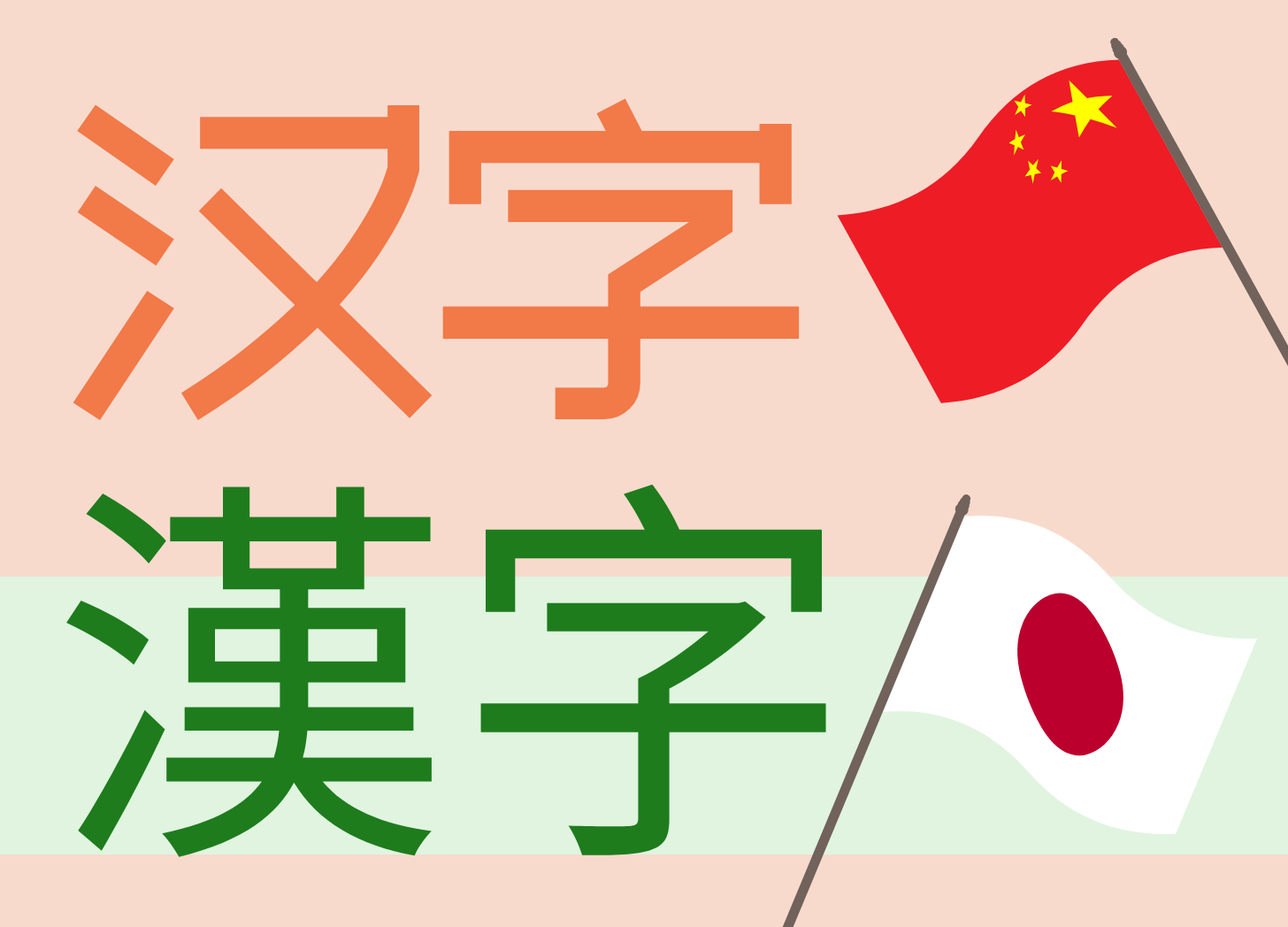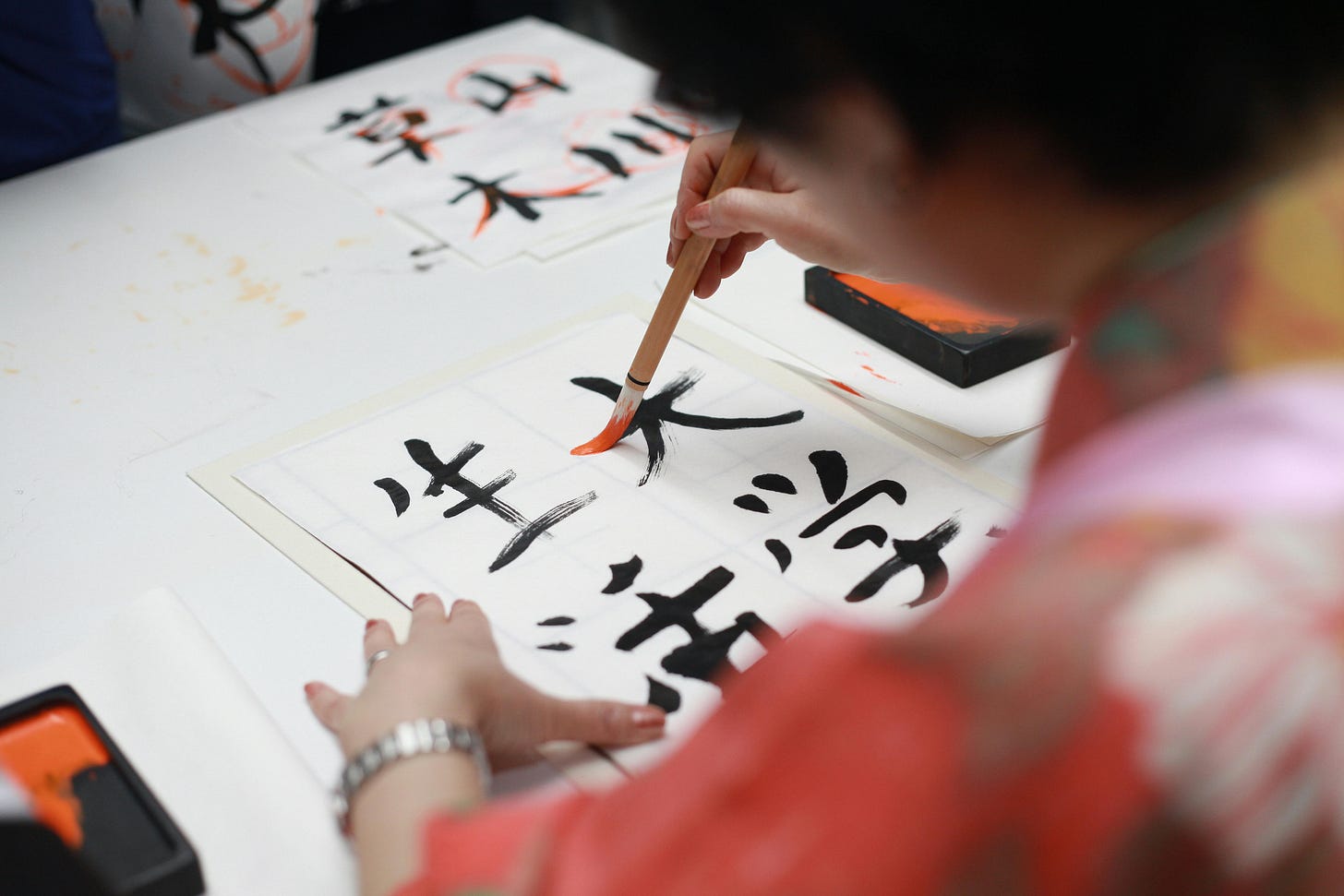How Chinese are Japanese Kanjis?
Hanzi or Kanji? How are they different? 🈷️🈶
If you are a fan of Chinese characters, you have probably taken an interest in Japanese kanji. Chinese characters arrived in Japan as early as the 5th century, where they evolved into kanji.
How different are modern Japanese kanji from the characters used in mainland China? Although Japanese kanji are generally recognizable to Mandarin speakers, there are many differences in the composition of modern kanji and hanzi. One significant reason for this is that mainland China simplified its characters in 1964.
Japanese calligraphy. Photo: Engin Akyurt
早在距今1300多年前,日本人便开始以中国汉字为基础,结合汉字造字的要素与原理,开始了国字的创造。之后,通过中日文化和贸易往来,日本国字也被传到了中国。
Over 1,300 years ago, the Japanese began creating their own characters (known as "国字" or "kokuji") based on Chinese characters, incorporating the elements and principles of Chinese character creation. Later, through cultural and trade exchanges between China and Japan, Japanese characters were also introduced to China.
中国的汉字传到日本后开始日本化,有被直接拿来使用的,也有借用汉字表达日本原有事物意思的,还有改变字体后使用的。日本人还喜欢运用会意字的造字原理,创造出独有的日本汉字。根据记载,这样的汉字如「峠」「笹」「畑」「榊」「躾」「辻」等,有好几千个。而「鱈」字原本是日本在室町时代所创造的文字,却被日本人渐渐淡忘,直至近代传入中国后,在中国的菜单上反而经常看到简化后的「鳕」字。
字体 (zìtǐ) - font, typeface, or style of writing characters
会意字 (huìyìzì) - ideogram or compound ideograph (a type of Chinese character formed by combining the meanings of two or more components, like 木 and 木 gives 林 or 森 )
鱈 (xuě) - cod (a type of fish)
室町时代 (Shìtīng shídài) - the Muromachi period, a division of Japanese history running from approximately 1336 to 1573
渐渐淡忘 (jiànjiàn dànwàng) - gradually forgotten
After Chinese characters were introduced to Japan, they began to undergo a process of Japanization. Some characters were directly adopted, some were used to express concepts originally native to Japan, and others had their forms altered. The Japanese also enjoyed creating their unique characters using ideograms (characters formed by combining meanings). According to records, there are several thousand such characters, such as "峠" (tōge), "笹" (sasa), "畑" (hatake), "榊" (sakaki), "躾" (shitsuke), and "辻" (tsuji). The character "鱈" (tara), originally created in Japan during the Muromachi period, was gradually forgotten by the Japanese. However, after being introduced to China in modern times, the simplified version "鳕" (xuě) frequently appears on Chinese menus.
大概中国人也不知道其实「腺」字也是日本自造的汉字吧,这个字其实是在200年前的江户时期由宇田川榛斋 (Udagawa Yoan) 所创造的字。宇田川造「腺」字,取其「像涌出的泉水一样的体液」之意,音同「泉」,中国则取发音同「线」。这个字的发音和意义原封不动地传到了韩国和越南,现在仍在使用。
腺 (xiàn) - gland (a biological term referring to an organ in the body that secretes particular substances)
江户时期 (Jiānghù Shíqī) - Edo period (a period in Japanese history from 1603 to 1868, during which the Tokugawa shogunate ruled Japan)
涌出 (yǒngchū) - to gush out, to surge forth (often used to describe a fluid or substance that flows out in a powerful or abundant manner)
体液 (tǐyè) - body fluid
取发 (qǔfā) - to adopt or derive (a meaning, pronunciation, or interpretation)
原封不动 (yuánfēng bùdòng) - intact, unchanged
Many Chinese people may not know that the character "腺" (xiàn) was also a character invented by the Japanese. This character was actually created 200 years ago during the Edo period by Udagawa Yoan. Udagawa created the character "腺" to represent something that "resembles fluid gushing out like spring water," with its pronunciation being similar to "泉" (quán, meaning "spring"). In China, the pronunciation "xiàn" (similar to "线," meaning "line") was adopted. The pronunciation and meaning of this character were passed on to Korea and Vietnam, where it is still in use today.
日语的文字由汉字和假名两套符号组成,混合使用。假名分为平假名和片假名。前者假借汉字的草书造成,用于日常书写和印刷;后者假借汉字楷书的偏旁冠盖造成,用于标记外来词、象声词以及特殊的专有词语。明治期间曾出现过罗马字拼写法,但不是主要文字。
假名 (kanji: 仮名) - kana (the collective term for the Japanese syllabic scripts used in conjunction with kanji)
平假名 (píngjiǎmíng) - hiragana (one of the two kana scripts used in Japanese)
片假名 (piànjiǎmíng) - katakana (one of the two kana scripts used in Japanese, primarily for foreign words, names, technical terms, and onomatopoeia)
假借汉字 (jiǎjiè hànzì) - using kanji for phonetic purposes (refers to the practice of borrowing Chinese characters to represent Japanese sounds or syllables)
草书 (cǎoshū) - cursive script (a style of Chinese calligraphy characterized by its flowing, cursive strokes)
楷书 (kǎishū) - regular script (a style of Chinese calligraphy that is characterized by its standard, orderly strokes)
偏旁冠盖 (piānpáng guàngài) - radicals and components of Chinese characters
明治期 (Míngzhì qī) - Meiji period (a period in Japanese history from 1868 to 1912)
The Japanese writing system consists of kanji (Chinese characters) and two sets of kana symbols, which are used together. Kana is divided into hiragana and katakana. Hiragana evolved from the cursive forms of Chinese characters and is used for daily writing and printing; katakana was created from the components of regular script characters and is used to write foreign words, onomatopoeia, and specific terms. During the Meiji period, there was an attempt to introduce Romanization, but it never became the primary writing system.
中国在现代出现了汉字简体化运动。1964年,中国文字改革委员会出版《简化字总表》。列入总表的简化字共计2238个,简化偏旁14个。由于汉字的简化,我们现在使用的是简体汉字,所以现在日文中存在着大量繁体字。
In modern China, Chinese characters were simplified. In 1964, the Chinese Character Reform Committee published the "List of Simplified Characters," which included a total of 2,238 simplified characters and 14 simplified radicals. We now use simplified characters, while Japanese writing retains many traditional characters because of its roots in classical Chinese.
部首不同的汉字,大致了解这些中文部首在日文汉字中长什么样之后,能够迅速掌握大部分的日文汉字词汇的字义。
By understanding what different Chinese radicals look like in Japanese kanji, you can quickly grasp the meanings of most Japanese kanji vocabulary.
言字旁:日文多用“言”而中文多用“讠”。
例如:日文:語;中文:语
食字旁:日文多用“食”而中文多用“饣”。
例如:日文:飲;中文:饮
绞丝旁:日文多用“糸”而中文多用“纟”
例如:日文:紙;中文:纸
金字旁:日文多用“金”而中文多用“钅”。
例如:日文:銀;中文:银
日文中常用四点水,代替中文的横线“—”。
例如:日文:魚;中文:鱼
日文中多一“点”,这类汉字一般也是能都直接与中文汉字对应起来直接理解。
例如:日文:単;中文:单
等等。
Do you study Japanese too?
Antoine & Dorota







